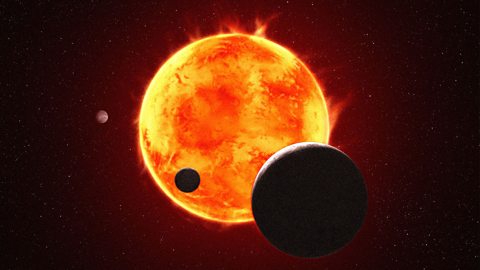
#Екзопланети
Открити екзопланети (Ekzoplaneti otkrit)

Okay, here's a breakdown of the provided text, categorized for clarity and highlighting key information:
**I. The Discovery and Early Days (1995-2000s)**
* **Queloz's Breakthrough (1995):** Didier Queloz discovered the first exoplanet – a hot Jupiter named 51 Pegasi b – orbiting the star 51 Pegasi. This was a pivotal moment in astronomy, proving that planets existed beyond our solar system.
* **Initial Detection Methods:** Radial velocity (Doppler spectroscopy) was the primary method used initially. This technique detects the wobble of a star caused by the gravitational pull of an orbiting planet.
* **Hot Jupiters Dominate:** Early exoplanet discoveries were largely dominated by "hot Jupiters"—large gas giants orbiting extremely close to their stars.
**II. Expanding Our Knowledge (2000s - Present)**
* **Increasing Diversity:** As technology improved, astronomers began to find a wider variety of exoplanets, including planets with sizes and masses between those of Earth and Neptune.
* **The Kepler Mission (2009-2018):** NASA’s Kepler Space Telescope was instrumental in discovering thousands of exoplanets, largely through the transit method (detecting dips in a star’s brightness as a planet passes in front of it).
* **The HIP 41378 System:** This system, discovered by Kepler, is particularly noteworthy because it has at least five transiting planets, and its planets are relatively well-spaced, resembling our Solar System more closely than many previous discoveries.
* **International Collaboration:** The ongoing search for exoplanets is now a global effort, with teams from around the world pooling data and expertise.
**III. Current and Future Research**
* **The Next Generation:** A new, dedicated radial velocity instrument (the Isaac Newton Telescope’s “)” is under construction. This instrument aims to provide highly sensitive measurements of stellar wobble, greatly increasing the chances of finding an Earth-like planet.
* **Targeting Earth Twins:** The primary goal of the new instrument and the ongoing research is to find a planet with a mass and radius similar to Earth, orbiting a Sun-like star at a similar distance. This is considered the best prospect for finding a potentially habitable planet.
* **Data Collection:** The team is planning to collect data for at least a decade, which is the estimated time needed to gather enough information to definitively answer the question of whether Earth twins truly exist.
**Key Themes & Takeaways**
* **Evolution of Discovery:** The search for exoplanets has evolved dramatically, starting with easily detectable hot Jupiters to a broader search for a wider range of planetary types.
* **Importance of Collaboration:** The vastness of the undertaking—searching for planets across the galaxy—necessitates a global partnership.
* **The “Earth Twin” Goal:** Finding a truly Earth-like planet remains the central objective, driven by the desire to understand the potential for life beyond our solar system.
---
Do you want me to elaborate on any particular aspect of this information, such as:
* A deeper dive into the radial velocity method?
* More details about the new instrument?
* The challenges of finding habitable planets?
0 коментара
Остави коментар
Scroll to Top


